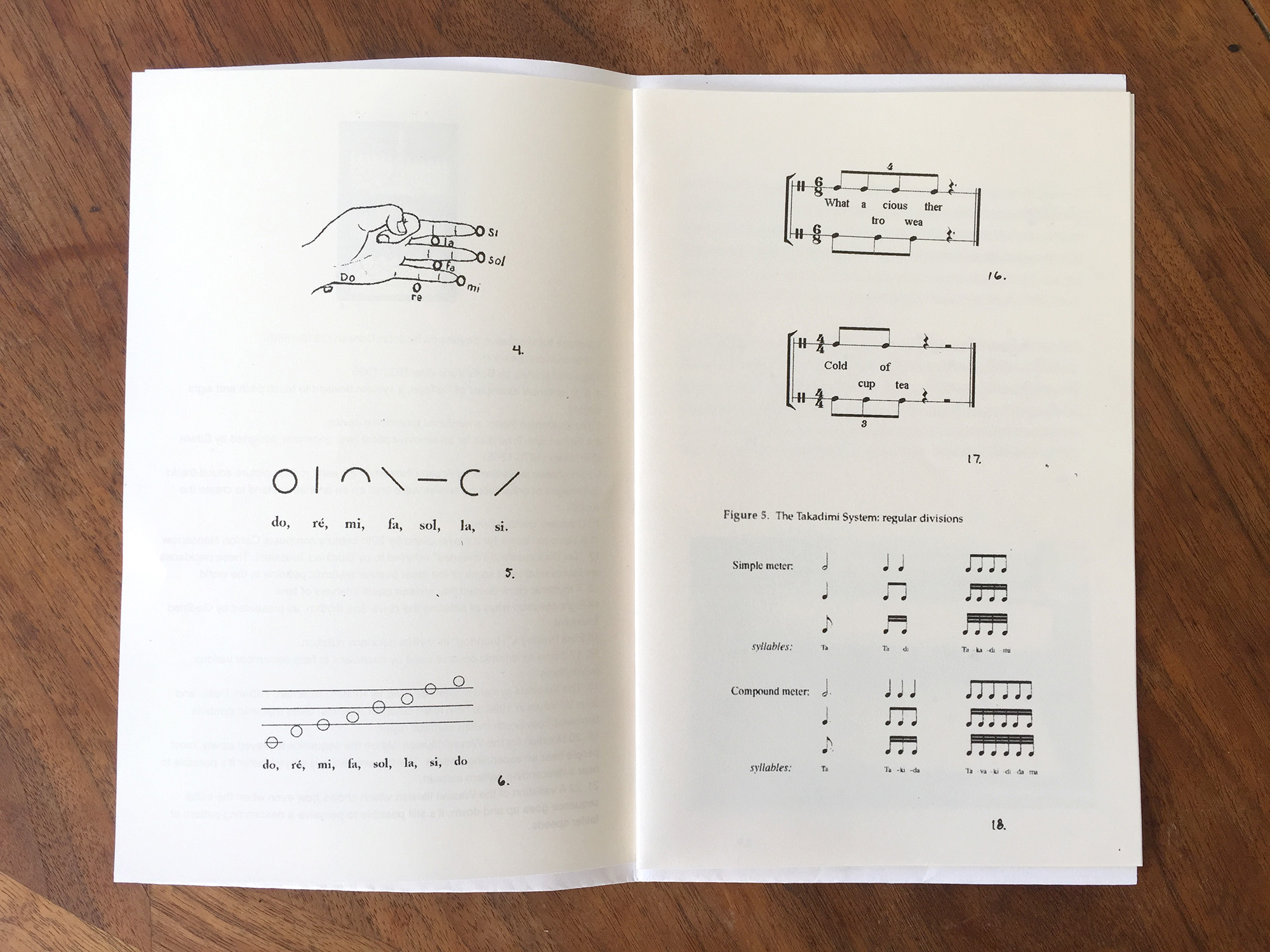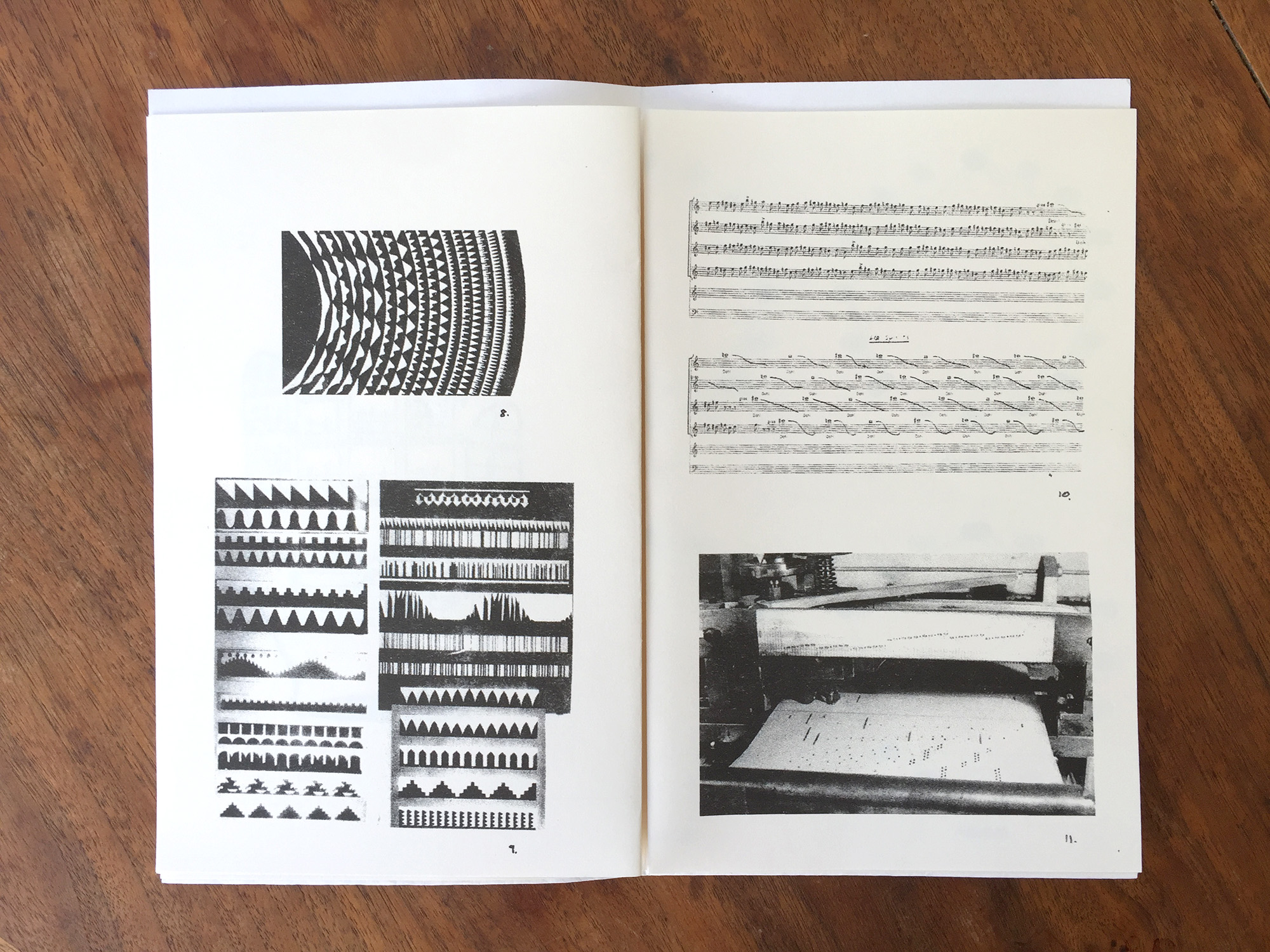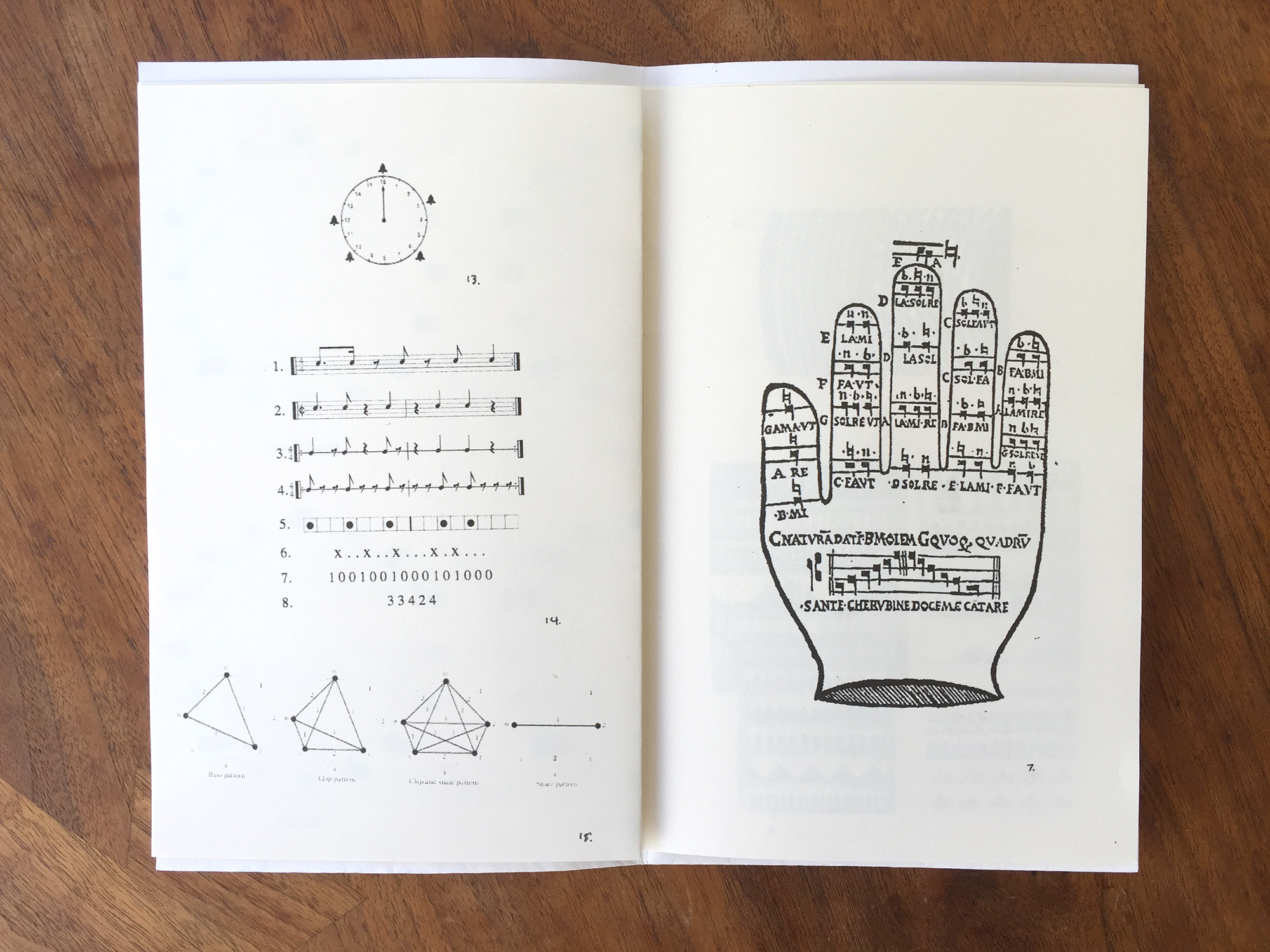
A presentation and limited edition risograph booklet about the history of alternative forms of music notation.The presentation also explored how various notation forms influence perception. The booklet was printed onsite, in collaboration with David Wilson. Cover image: Solfege hand notation developed by John Curwen (1816-1880).

4,5,and 6: Historical examples of Solfege, a system devised to teach pitch and sight singing.
16 and 17: Some mnemonic devices used by musicians to help remember various polyrhythms.
18: The Takadimi system devised by Richard Hoffman, William Pelto, and John W. White in 1996 to help learn complex rhythms. Uses rhythmic symbols borrowed from South Indian carnatic music.

8: A Welte Light-Tone disk for an electro-optical tone generator designed by Edwin Emil Welte (1876-1958).
9: Hand-drawn waveforms by Arseny Avraamov for early motion picture soundtracks. Still images of drawn sound waves were shot on an animation stand to create the sounds.
10: Unknown microtonal composition
11: A piano roll score for a player piano, by 20th century composer Conlon Nancarrow.

14: Eight common ways of representing the clav Son rhythm, as presented by Godfried Toussaint.
15: Elvis Presley’s “Houndog” in rhythm necklace notation.
7: The Guidonian Hand, a medieval mnemonic device.